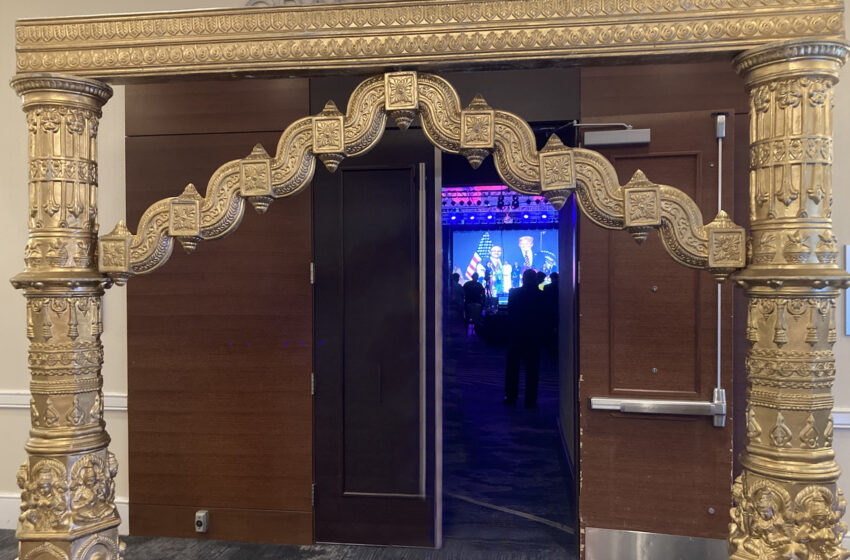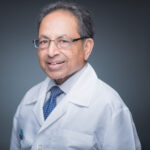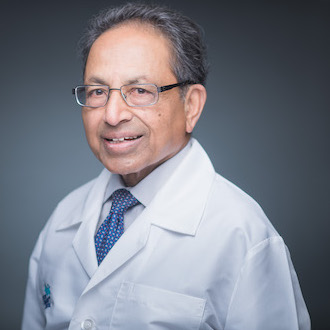Infighting overshadows AAPI convention: A plea for reconciliation

The 2024 annual convention of the American Association of Physicians of Indian Origin (AAPI), which begins in New York on July 18, is overshadowed by infighting within the organization. Pictured above is the venue of the 2023 AAPI convention in Philadelphia.
As leadership disputes overshadow a marquee annual event, a founder and former president calls for unity
By Dr. Navin C. Shah
(Editor’s note: Dr. Navin C. Shah is a founder and second president of the American Association of Physicians of Indian Origin (AAPI). His memoir, Karma and the Destiny of an Indian American Surgeon, was published by AB Books in 2022.)
 The American Association of Physicians of Indian Origin (AAPI) will host its annual convention next week in New York. According to the AAPI website, the five-day event, branded as the “World Health Congress,” will feature 80 speakers and 3,000 participants.
The American Association of Physicians of Indian Origin (AAPI) will host its annual convention next week in New York. According to the AAPI website, the five-day event, branded as the “World Health Congress,” will feature 80 speakers and 3,000 participants.
However, the conference is being overshadowed by intense infighting and division within the AAPI leadership, marring what should have been a joyous occasion.
In the past month, two different factions have elected two different chairs of the board of trustees, throwing the organization into chaos and triggering questions about legitimacy. This crisis follows various court cases and severe discord among AAPI’s leadership folds and factions.
READ: Arbitrator denies temporary restraining order against AAPI (March 9, 2024)
It is time for AAPI leaders and members to bury the hatchet and unify the organization. Otherwise, AAPI will become irrelevant. I am writing this with a heavy heart, as a founder and the second president of the organization.
A little bit of history first:
Since its founding in the early 1980s, AAPI has played a historical role in empowering Indian American physicians and other doctors who earned their medical degrees outside of the United States. One doesn’t have to be a physician or an immigrant to appreciate the role of AAPI in the fight for equality.
In the 1980s, AAPI was formed to provide a solid platform for practicing US doctors of Indian origin. The major issues were fighting overt and covert discrimination against US-trained, fully qualified Foreign Medical Graduates (FMGs) and improving medical education and health care in India. AAPI created a central body of FMGs from different countries and fought in unison to gain equality with US Medical Graduates (USMGs).
After almost a decade of struggle in Congress and successive administrations, the FMGs gained equality through legislation enacted by the U.S. Congress and signed by President George H.W. Bush. The AMA allotted a special cell for FMGs, now known as International Medical Graduates (IMGs).
Historically, AAPI has also done quite a lot to improve healthcare in India. To augment medical education and health care, the organization undertook multiple projects with the Health Ministry and Medical Council of India (MCI):
- Providing state-of-the-art continuing medical education (CME) both through seminars and hands-on courses.
- Donating US medical equipment to medical college hospitals.
- Hospital accreditation, and many more.
Unfortunately, due to multiple shortfalls and leadership problems, the programs and projects did not progress further.
There are 100,000 practicing physicians of Indian origin in the United States at the moment. Almost 80,000 are first-generation graduates of Indian medical colleges, and 20,000 are second-generation graduates of U.S. medical schools. Many are in leadership positions in organized U.S. medicine and also in different medical and surgical specialties. Over 10 percent are in faculty positions in U.S. medical schools and training programs.
Dr. Navin C. Shah: Farewell, my friend! A friend of 35 years pays tribute (May 23, 2023)
The crisis has been in the making for some time. Over the years, the organization has shrunk instead of expanding. Last year, I attended the AAPI annual conference held in Philadelphia after many years. It was a nice occasion for me to interact with many old friends and colleagues. However, one thing I noticed was not many US-educated second-generation doctors are part of AAPI.
Even though AAPI’s potential pool of membership is in six figures now, it has failed to enlist a large majority of these U.S. doctors. Presently, AAPI has only a small fraction of these physicians as active members.
The AAPI leadership has to go beyond their differences and fights and obtain all physicians’ confidence and support, persuading them to be a part of AAPI. This can be achieved by expanding activities and honoring leadership in US medicine for their participation.
As a founder, former President, and Trustee of AAPI, I feel helpless to save AAPI from its destruction. I appeal to all factions of leadership to resolve their differences and salvage and rejuvenate AAPI for unity and get involved in a positive role in medical education, patient care, medical research, and all aspects of health care.
We, physicians, routinely revive patients after multiple CPRs and can do the same for AAPI. Let us all forget our differences and work to strengthen AAPI. We definitely can do it and save AAPI.

